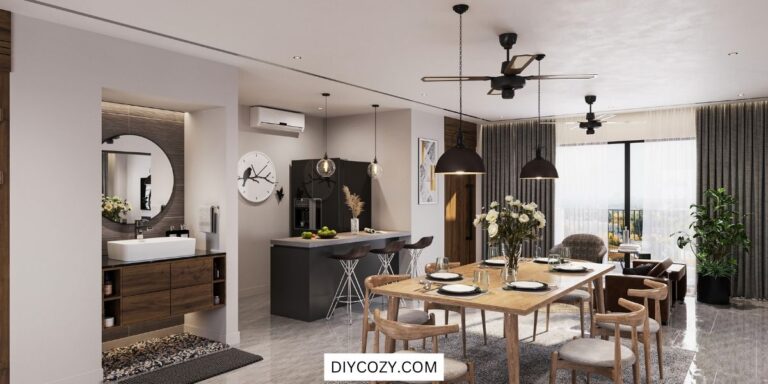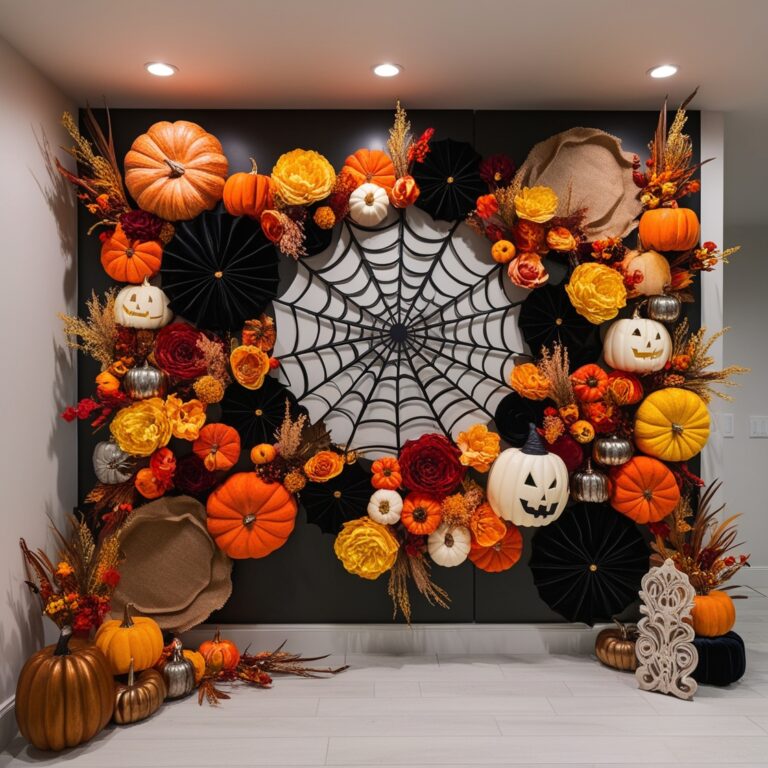22 Open Concept Kitchen and Living Room Ideas
If you’ve ever found yourself daydreaming about knocking down that one pesky wall that separates your kitchen from your living room — you’re not alone.
Open concept living has become the heartbeat of modern homes, turning separate spaces into one flowing, social, light-filled area.
Let’s dive into 22 open concept kitchen and living room ideas that will inspire your next big (or small!) transformation.
1. Create Cohesion with Color
An open concept space thrives on visual unity. Try using one color palette across both your kitchen and living room — think soft grays, whites, or warm neutrals. Even if you mix materials or finishes, repeating tones helps the entire space feel cohesive and intentional.
2. Define Spaces with Area Rugs
A big perk of open layouts is flexibility, but without walls, you’ll need something to define zones. Rugs do this beautifully. A patterned rug under the sofa area can signal “living zone,” while a neutral runner or mat grounds the kitchen area.
3. Use a Kitchen Island as a Divider
Your island isn’t just for prepping or casual dining — it can subtly separate the kitchen from the living area. Choose an island with bar seating on the living room side to keep things social, or go bold with a contrasting countertop color to mark the boundary.
4. Mix Materials for Character
Balance sleek with rustic, modern with cozy. For example, pair marble countertops with a reclaimed wood coffee table, or matte black light fixtures with warm oak flooring. Mixing textures gives an open space that lived-in, curated charm.
5. Keep Lighting Layered
Lighting plays a huge role in defining each area. Use pendant lights or chandeliers over the kitchen island, add a statement floor lamp near the sofa, and include recessed lighting throughout for even brightness. This layering keeps the room from feeling flat.
6. Add a Partial Wall or Half Partition
If you crave openness but still want a touch of separation, consider a half wall or low partition. It keeps sightlines open while offering a bit of privacy — plus, it’s a great spot to mount a TV or display plants and decor.
7. Choose Consistent Flooring
One of the easiest ways to visually connect an open kitchen and living room is with consistent flooring. Hardwood, laminate, or polished concrete flowing throughout both spaces creates instant harmony and a smooth visual transition.
8. Incorporate a Double-Sided Fireplace
A double-sided fireplace is a stunning focal point that warms both zones while maintaining openness. Imagine cooking dinner while the fire crackles just beyond — cozy, right? It adds a touch of luxury and ties the two spaces together naturally.
9. Blur the Lines with Lighting Fixtures
Want a truly unified look? Choose lighting that visually links the kitchen and living room. For instance, use pendant lights that echo the design of the living room chandelier or sconces in matching finishes. Small details go a long way in tying everything together.
10. Add Statement Ceilings or Beams
Ceiling treatments are often overlooked but can make a massive impact in open layouts. Exposed wooden beams, coffered ceilings, or even tongue-and-groove planks can define zones and add character while keeping the flow uninterrupted.
11. Play with Furniture Placement
Furniture can act as invisible walls. A sectional sofa, for example, can subtly mark the edge of the living area. Pair it with a console table behind it, and suddenly, you’ve got a sense of division without blocking sightlines.
12. Embrace a Minimalist Aesthetic
Open concept designs can easily feel cluttered if you’re not careful. Keep decor simple, opt for multifunctional furniture, and let negative space breathe. Less visual noise means the openness feels intentional — not chaotic.
13. Add a Breakfast Bar
Not every kitchen has room for a huge island, and that’s okay! A slim breakfast bar or peninsula is a great compromise. It provides a casual dining space, a prep surface, and a natural boundary between the kitchen and living area.
14. Integrate Smart Storage Solutions
The trick to maintaining open concept bliss? Hiding clutter. Use built-in cabinetry, floating shelves, and hidden storage within your island. When everything has a home, your space looks effortlessly put together.
15. Go for an Airy, Neutral Palette
Light colors like whites, creams, and soft beiges make open spaces feel larger and more seamless. If you’re worried about things feeling too stark, add warmth through natural wood accents, cozy throws, and textured fabrics.
16. Use Glass to Your Advantage
Glass partitions or sliding doors can help define zones while preserving that airy flow. They’re especially great if you occasionally want to contain noise or cooking smells without shutting off the space entirely.
17. Introduce Contrast with the Kitchen Cabinetry
You can still define the kitchen visually while keeping things cohesive. Try using slightly darker cabinetry tones than your living room furniture or adding a contrasting backsplash to create subtle distinction without losing unity.
18. Add Plants for a Natural Flow
Houseplants breathe life into open layouts. Use tall plants like fiddle leaf figs to create soft divisions, or cluster smaller ones on open shelves and countertops to weave both areas together. Bonus: they help improve air quality too!
19. Design a Seamless Entertaining Space
An open concept layout is made for gatherings. Arrange furniture to encourage conversation — maybe bar stools facing the living area, a large sectional oriented toward the kitchen, and a buffet counter that doubles as a serving station for guests.
20. Make the Most of Natural Light
Tear down those heavy drapes and let sunlight do the work. Open layouts feel their best when flooded with natural light. Large windows, skylights, or even a glass patio door can make your kitchen and living room glow as one continuous, cheerful space.
21. Bring in a Cohesive Design Theme
Pick a central design theme — maybe coastal, industrial, farmhouse, or modern minimalist — and apply it consistently across both zones. Shared decor language (like similar metals, colors, or materials) ensures the look feels polished and intentional.
22. Use Accent Walls to Ground Each Zone
Even in an open layout, every area deserves its own personality. Try a bold backsplash in the kitchen paired with a complementary accent wall behind the sofa. It adds depth while keeping the visual rhythm flowing beautifully.
Bonus Tips for a Successful Open Concept Layout
Because I know you’re already dreaming about that sledgehammer moment, here are a few extra nuggets of wisdom before you dive in:
- Mind the noise: Open layouts carry sound farther. Use rugs, curtains, and upholstered furniture to help absorb noise.
- Hide the mess: The kitchen is always in view — invest in closed storage and quick-clean surfaces.
- Keep balance in mind: Avoid over-decorating one area. If your living room has bold art, let your kitchen lean minimalist.
- Don’t forget the flow: Make sure there’s enough space to move comfortably between the two zones — ideally at least 3–4 feet between furniture pieces.
Final Thoughts
An open concept kitchen and living room isn’t just a trend — it’s a lifestyle shift toward connection, comfort, and community. It’s about chatting with friends while stirring a pot of soup, keeping an eye on the kids while folding laundry, or hosting game night without feeling boxed in.
The beauty of these layouts lies in flexibility. You can make them as modern, cozy, or eclectic as you like. The goal is to let the design breathe and reflect your personality — because the best open concept spaces aren’t just open in structure, they’re open in spirit too.
So, whether you’re planning a full renovation or just moving furniture around this weekend, use these 22 ideas as your springboard. Knock down that wall, embrace the light, and create a kitchen-living combo that feels effortlessly you.
Ready to get started? Imagine your morning coffee at the island, sunlight spilling across both rooms — that’s the open concept dream right there.






